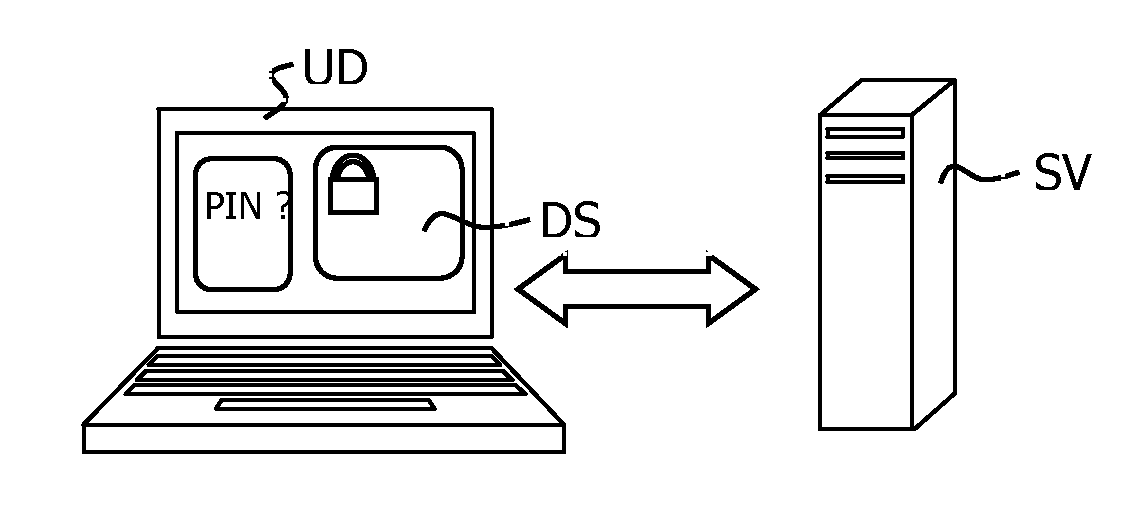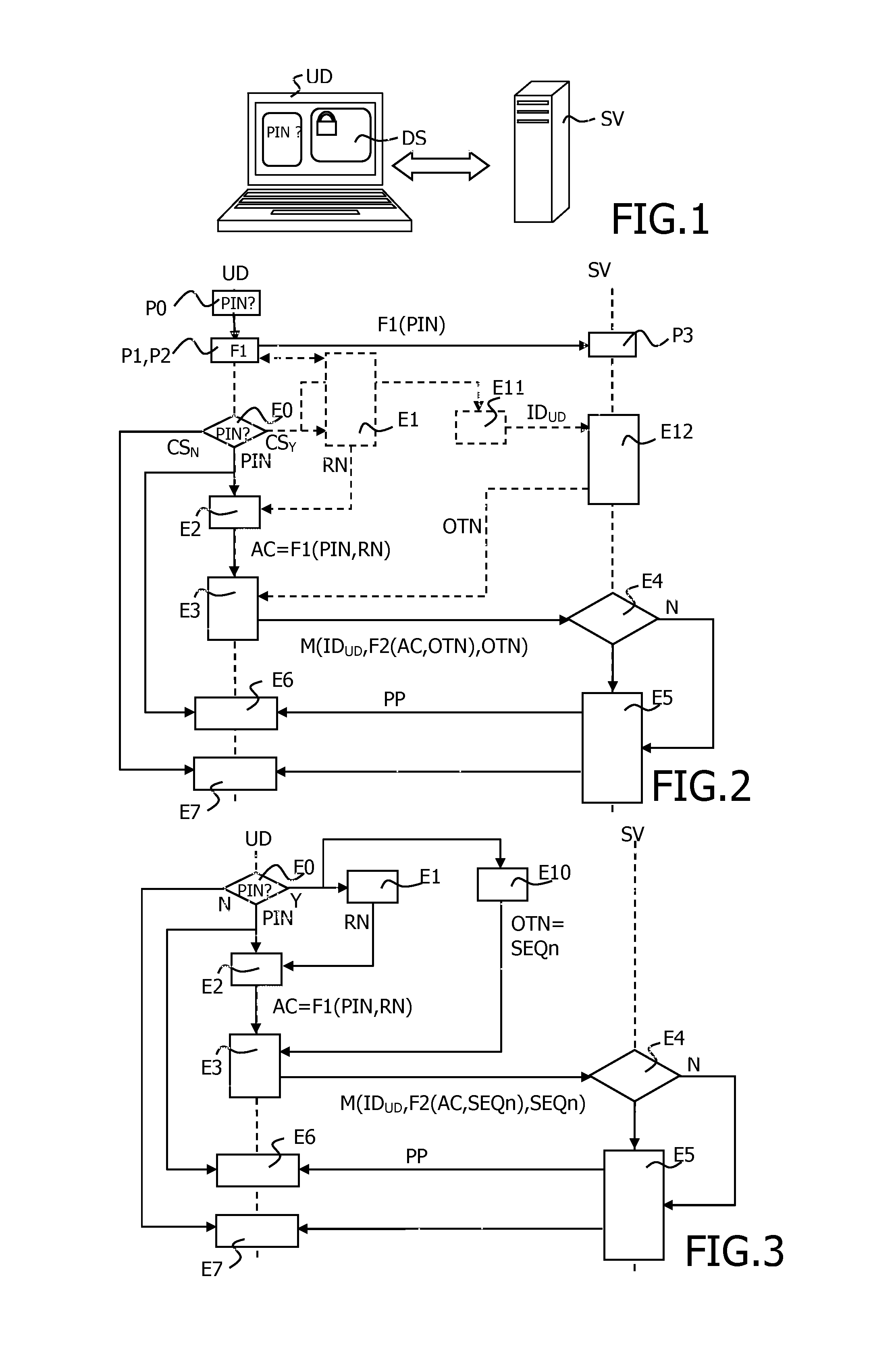Method for server assisted keystore protection
a keystore and key technology, applied in the direction of securing communication, user identity/authority verification, digital transmission, etc., can solve the problems of more limited keyboard capabilities, burdensome use of long passphrases, and limited measures available to preserve integrity and confidentiality of secrets
- Summary
- Abstract
- Description
- Claims
- Application Information
AI Technical Summary
Benefits of technology
Problems solved by technology
Method used
Image
Examples
first embodiment
[0060]FIG. 2 shows a flow chart of the method of the invention.
[0061]In a first preliminary step P0, the user is prompted to enter a personal code PIN. A first function F1 is then applied to said entered personal code PIN in a second preliminary step P1, the result of which being sent in a step P2 to a server SV for storage P3 of the received value F1 (PIN).
[0062]Each time the user of the device UD requests access to the keystore DS, in a first step E0, the user is prompted to enter his / her personal code, typically a Personal Identification Number (PIN in the following) or similar easy-to-use code into the device.
[0063]The PIN is not known by the device. Nevertheless, the device may have a checksum CS of the PIN in order to do a first check of it. In this case, if the checksum of the PIN is not correct (CSN), a step E7 implies the key store DS remains locked.
[0064]In any one of the two cases, the PIN is transferred to a step E2 wherein an access code AC is calculated from at least t...
second embodiment
[0073]FIG. 3 shows a flow chart of the previously exposed advantageous feature of the invention consisting in using a one-time password in the method of the invention. Preliminary steps are identical to the ones of FIG. 2 and this figure only shows the method after step E0, where the user requests access to the keystore DS.
[0074]After the first step EU where the user is prompted to enter his / her personal code, if the checksum CS of the PIN is not correct, the keystore remains locked in a step E7. The keystore can also being destroyed after a predetermined number of wrong attempts. If the checksum CS of the PIN is correct, two steps E1 and E10 are performed. Step E1 consists in generating and storing a fixed random number RN, or in retrieving it if it was previously generated, to feed the step E2 of creating an access code AC.
[0075]Step E10 consists, for the device UD, in generating a nonce OTN that is a sequence value SEQ. Typically the sequence value SEQn consists in an ever-increa...
PUM
 Login to View More
Login to View More Abstract
Description
Claims
Application Information
 Login to View More
Login to View More - R&D
- Intellectual Property
- Life Sciences
- Materials
- Tech Scout
- Unparalleled Data Quality
- Higher Quality Content
- 60% Fewer Hallucinations
Browse by: Latest US Patents, China's latest patents, Technical Efficacy Thesaurus, Application Domain, Technology Topic, Popular Technical Reports.
© 2025 PatSnap. All rights reserved.Legal|Privacy policy|Modern Slavery Act Transparency Statement|Sitemap|About US| Contact US: help@patsnap.com


